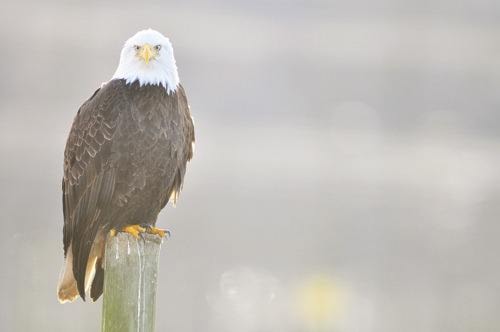A steady and relatively plentiful diet of seagulls, ducks and rodents is keeping Delta’s local bald eagle population pretty well fed.
Reports in the media a few weeks ago expressed concern the collapse of the chum salmon run in the Howe Sound/Squamish River area due to a toxic spill caused by a train derailment in 2005 had left plenty of bald eagles in dire straits for food.
Sue Davies, an educator at OWL (Orphaned Wildlife Rehabilitation Centre) in east Ladner said that doesn’t appear to be the case.
“The birds know where to go for food,” Davies said, adding good numbers made for the Harrison area where this year’s sockeye salmon run left a good food supply. “There were so many fish the eagles weren’t fighting each other for food.”
While only a small percentage of the bald eagle population from the Howe Sound area may have traveled as far as Delta in search of better feeding grounds, what they would have found was an assortment to dine on.
Davies said bald eagles here are fortunate to have a good population of ducks, seagulls and rodents—especially at the Vancouver Landfill—to eat.
“People always talk about the eagles at the landfill, and they are not there eating garbage. They’re there for the rats. That and the heat from the landfill (produced by rotting garbage),” Davies said.
Given the number of resident bald eagles in Delta, that’s favourable news for the species.
Davies said that of the estimated 1,500 to 2,000 bald eagles in the Lower Mainland, just over half are located here.
Based on observations, other than the odd one or two bald eagles—mostly juveniles—who appear on the thin side, the majority in Delta are of healthy weight for this time of the year, Davies said.
